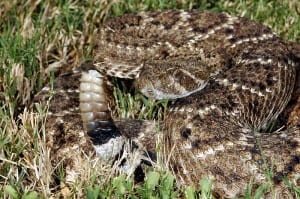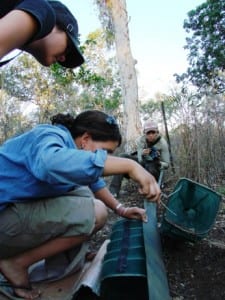
Slow worms are legless lizards. LDUCZ-X206
Slow worms – They don’t have a leg to stand on
Not all legless reptiles are snakes, like this slow worm which is just one of the many kinds of legless lizards. The complete or near loss of limbs has evolved in lizards a great number of times. Some entire lizard families are legless. Some families contain a few species with tiny vestigial limbs, while the rest are limbless. Some families are mostly “normal” four-limbed species, with limblessness, near limblessness, or two-leggedness having evolved in certain lineages independently. The biggest lizard family – the skinks (of which there are 1500 of mostly leggy species) – has groups that have lost their limbs on numerous occassions in Africa, Europe and Australia. In most cases of legless lizards, some remnant of the hindlimbs is visible, often by the precence of scaly flaps.
Getting legless
Leglessness evolves when the legs become a hindrance rather than a help in an animals’ locomotion, and in lizards this is normally to do with burrowing. Essentially lizards have found that it is more effective to “swim” through the soil, pushing their way through little gaps with their heads. If you think about it, this makes sense because lizards’ arms aren’t that close to their snouts, so using them to dig can be a it awkward. This is one also one of the main hypotheses for how and why snakes evolved. Swimming is also a driving factor for losing limbs.
How do you tell a snake from a legless lizard?*
(more…)
 Close
Close




